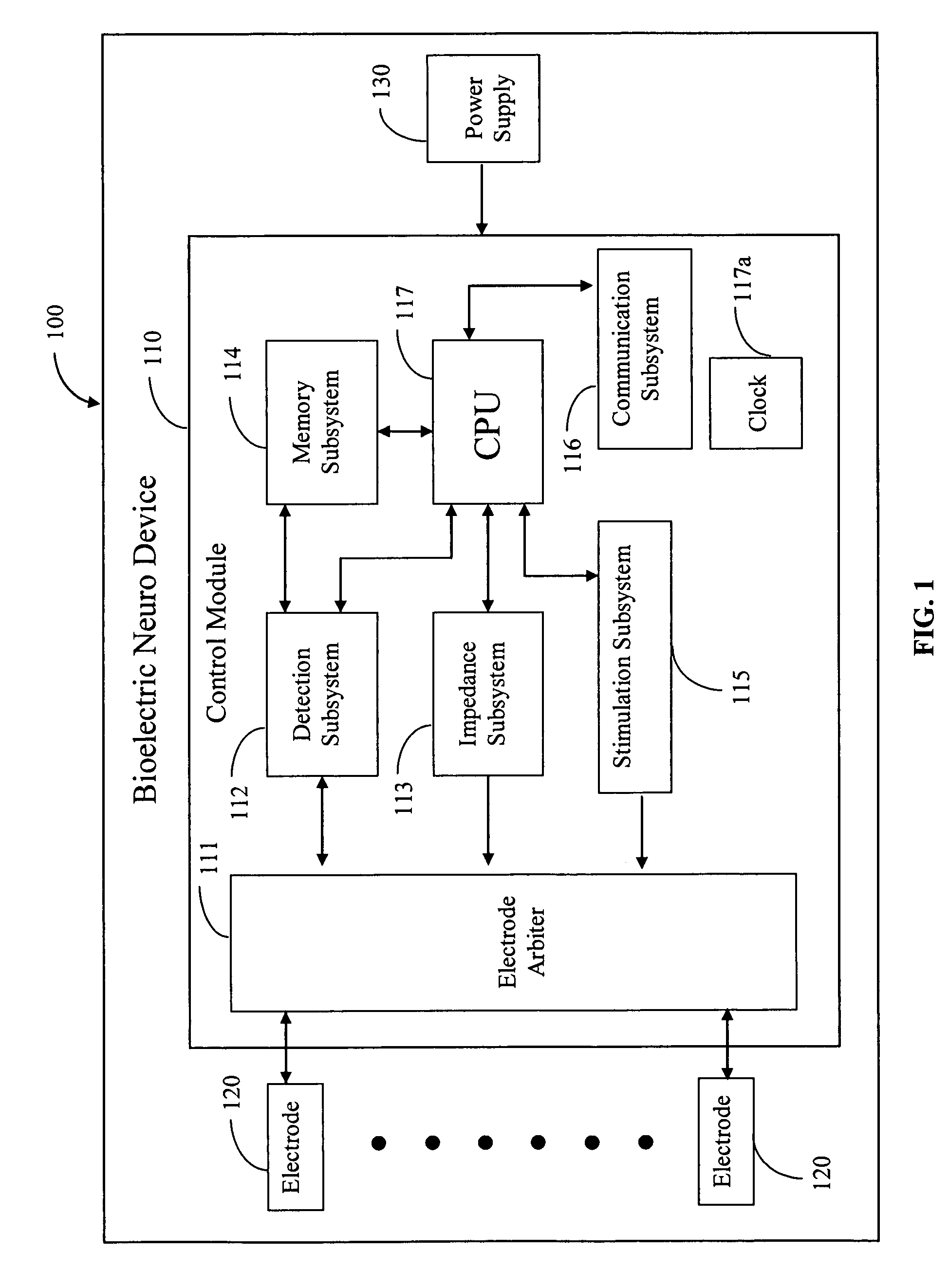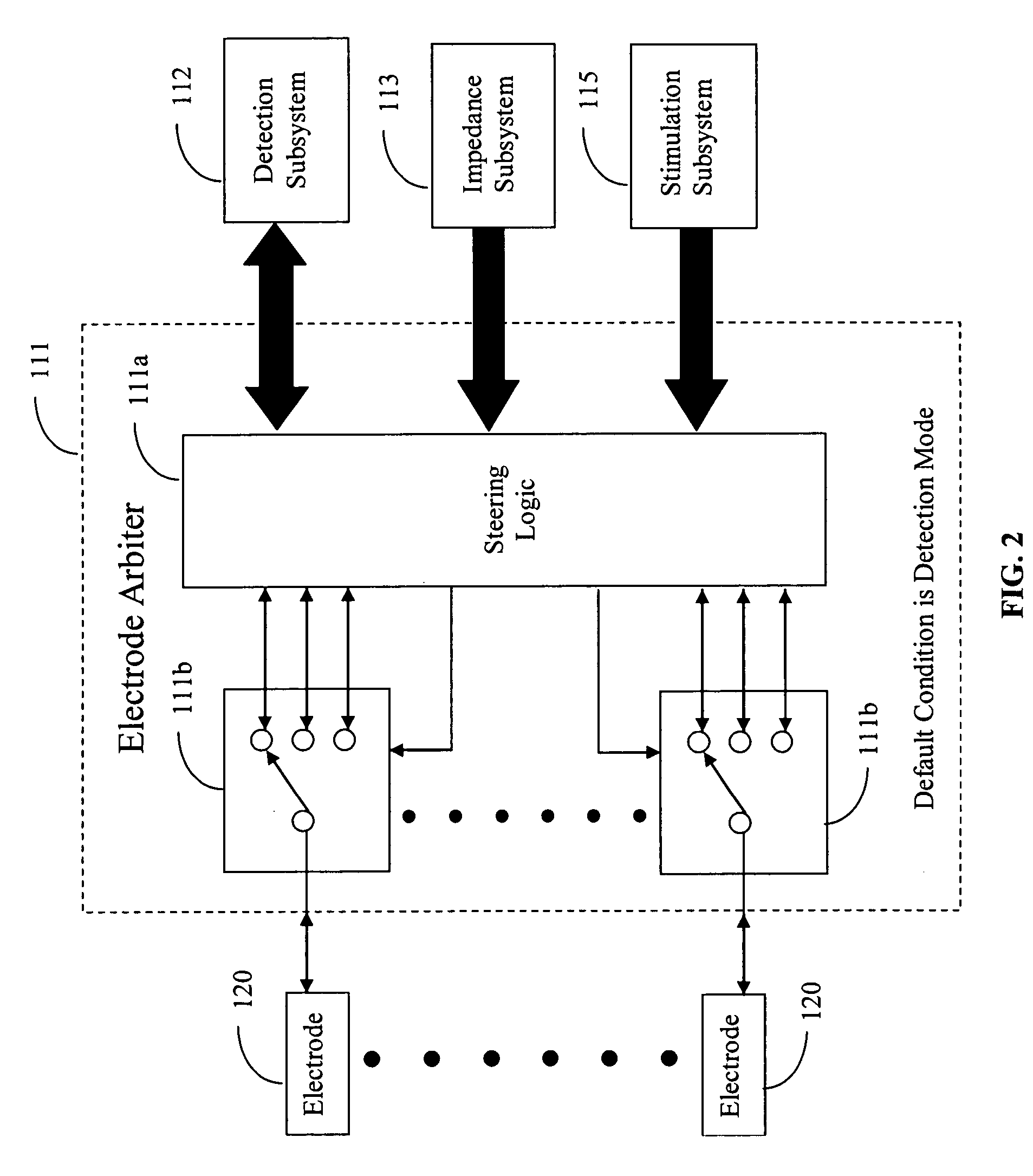Medical devices for the detection, prevention and/or treatment of neurological disorders, and methods related thereto
a medical device and neurological technology, applied in the field of medical devices, can solve the problems of limiting the successful use and standardization of therapy, and achieve the effects of preventing, treating, and detecting seizures, and reducing the risk of infection
- Summary
- Abstract
- Description
- Claims
- Application Information
AI Technical Summary
Benefits of technology
Problems solved by technology
Method used
Image
Examples
Embodiment Construction
[0055] The present invention pertains to medical devices for detecting, preventing, and / or treating neurological disorders, based on electrical stimulation. The present invention also pertains to methods for detecting, preventing, and / or treating neurological disorders utilizing such devices.
1. Definitions
[0056] The term “bioelectric neuro device”, as used herein, refers to the medical device for the detection, prevention, and / or treatment of neurological disorders via electrical stimulation.
[0057] The term “concentric”, as used herein, refers to electrode elements wherein larger elements surround the smaller elements. In a preferred embodiment, conductive elements configured as rings with consecutively increasing radius surround a central conductive disc. In other embodiments, the conductive elements that surround the central electrode element may be a square, rectangle, ellipse, or polygon comprising any number of sides.
[0058] The term “electrical source” or “electrical sourc...
PUM
 Login to View More
Login to View More Abstract
Description
Claims
Application Information
 Login to View More
Login to View More - R&D
- Intellectual Property
- Life Sciences
- Materials
- Tech Scout
- Unparalleled Data Quality
- Higher Quality Content
- 60% Fewer Hallucinations
Browse by: Latest US Patents, China's latest patents, Technical Efficacy Thesaurus, Application Domain, Technology Topic, Popular Technical Reports.
© 2025 PatSnap. All rights reserved.Legal|Privacy policy|Modern Slavery Act Transparency Statement|Sitemap|About US| Contact US: help@patsnap.com



